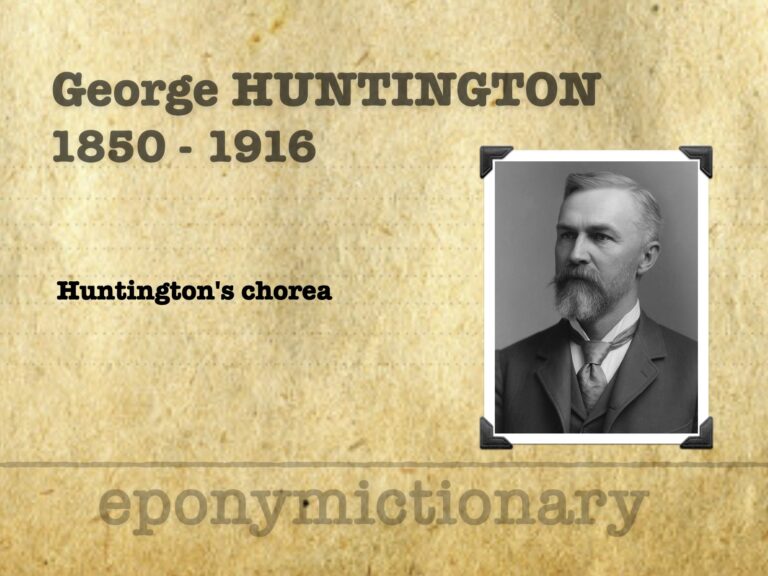
George Huntington
George Huntington (1850-1916) was an was an American physician. Described Huntington's disease (1872) at age 22 based on his family

George Huntington (1850-1916) was an was an American physician. Described Huntington's disease (1872) at age 22 based on his family
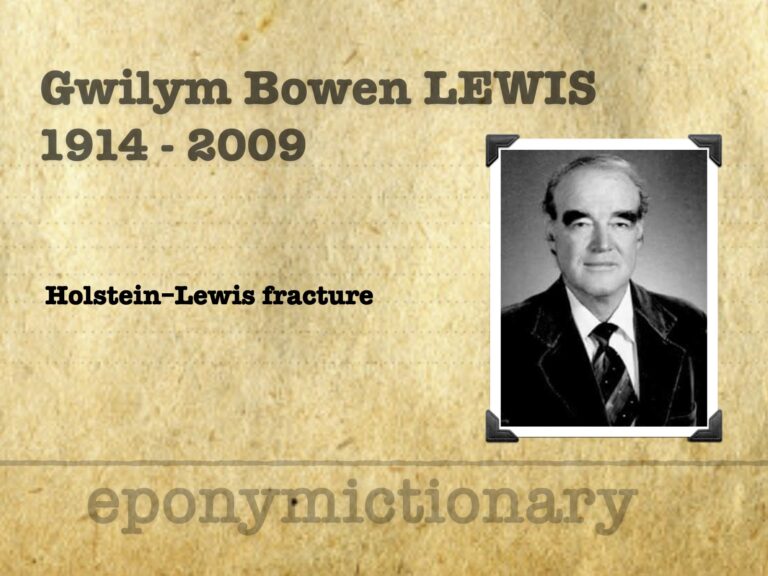
Gwilym B. Lewis (1914-2009) American Orthopedic Surgeon. With Arthur Holstein - eponymously affiliated with the Holstein–Lewis fracture (1963)
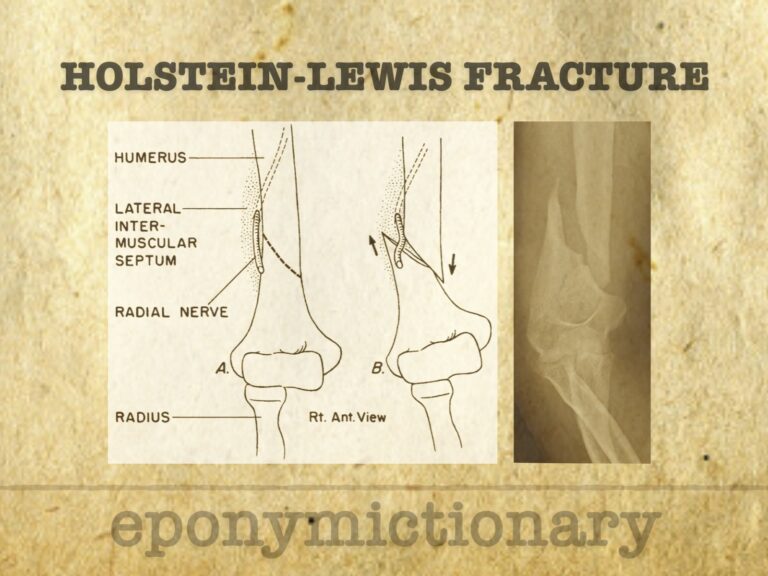
Holstein–Lewis fracture: simple spiral fracture of the distal third of the shaft of humerus with distal bone fragment displaced and the proximal end deviated toward the radial side
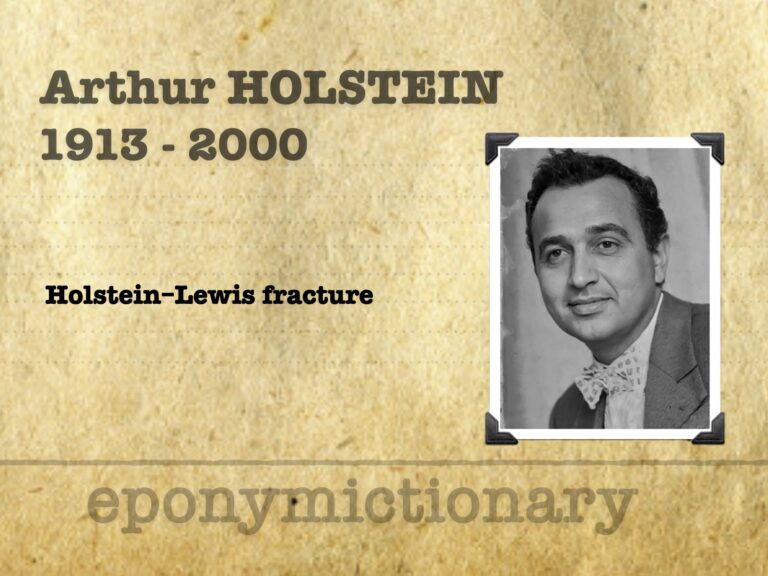
Arthur Holstein (1913-2000) was an American Orthopedic Surgeon with Gwilym Lewis described the Holstein–Lewis fracture (1963)

Albert Hoffa (1859-1907) was a German orthopedic surgeon. eponymously affiliated with a distal femur fracture (1888); an operation for congenital hip dislocations (1890); the development of a system of massage therapy, the Hoffa system (1893); and the Hoffa fat pad

Leopold Schrötter Ritter von Kristelli (1837-1908) an Austrian internal physician. He is known for his description of effort thrombosis (upper limb DVT) eponymously termed Paget-Shroetter syndrome in 1884.
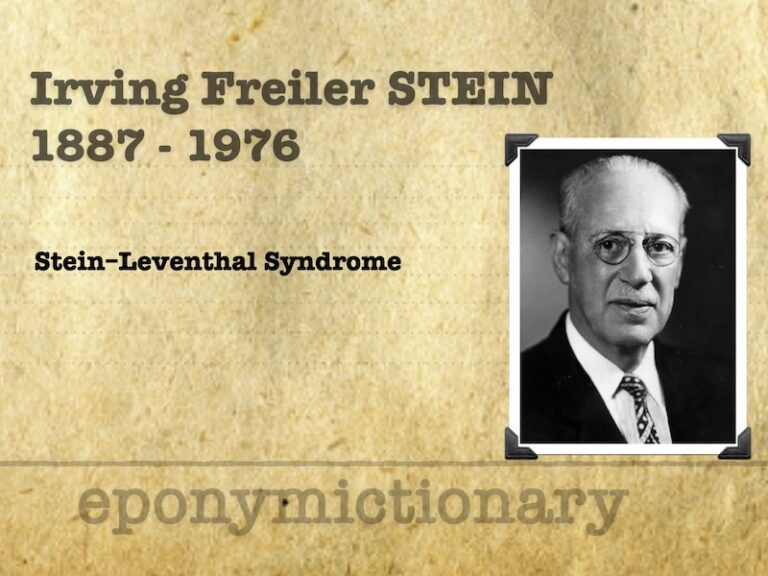
Irving Freiler Stein (1887-1976) was an American gynaecologist. remembered for his contribution to the field of infertility and eponymously for the Stein–Leventhal Syndrome (1934)
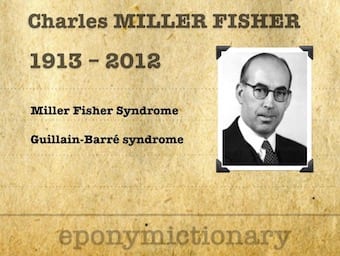
Charles Miller Fisher (1913 - 2012) was a Canadian neurologist. Miller Fisher syndrome (1956) an acquired nerve disease variant of Guillain-Barré syndrome.
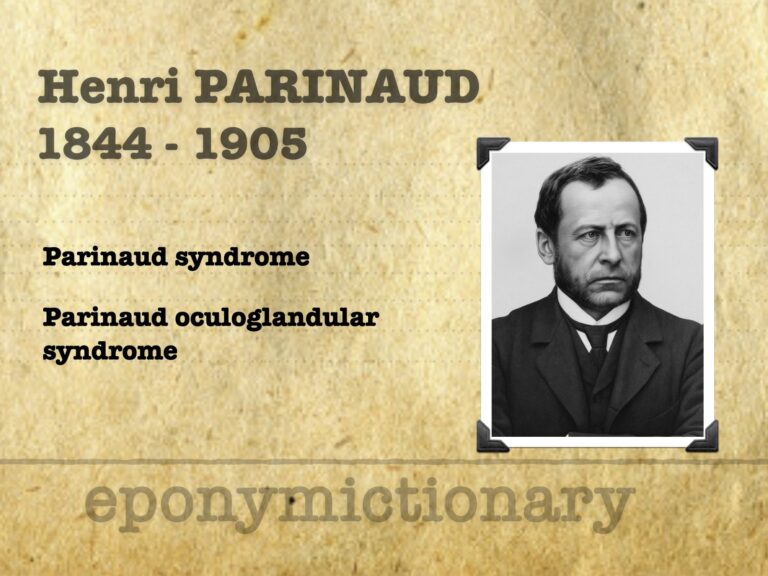
Henri Parinaud (1844-1905) was a French ophthalmologist and neurologist. Parinaud Syndrome (1883) aka Dorsal Midbrain Syndrome
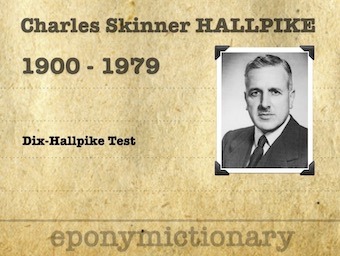
Charles S. Hallpike (1900–1979), British neuro-otologist, co-devised the Dix–Hallpike manoeuvre, clarified Menière’s disease pathology, and pioneered vestibular physiology.

André Strohl (1887-1977) was a French physician and physicist. Guillain-Barré-Strohl syndrome described in 1916

Jean-Alexandre Barré (1880–1967). French neurologist ; co-described Guillain–Barré syndrome; pioneer in vestibular neurology and semiology; eponyms include Barré test and Barré–Liéou syndrome.